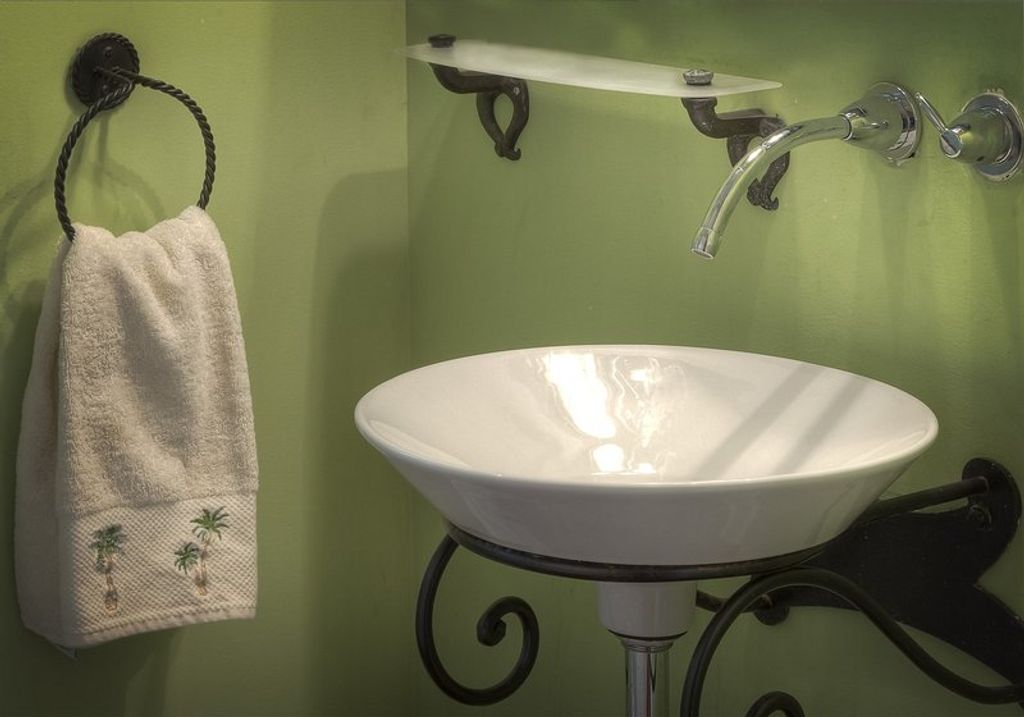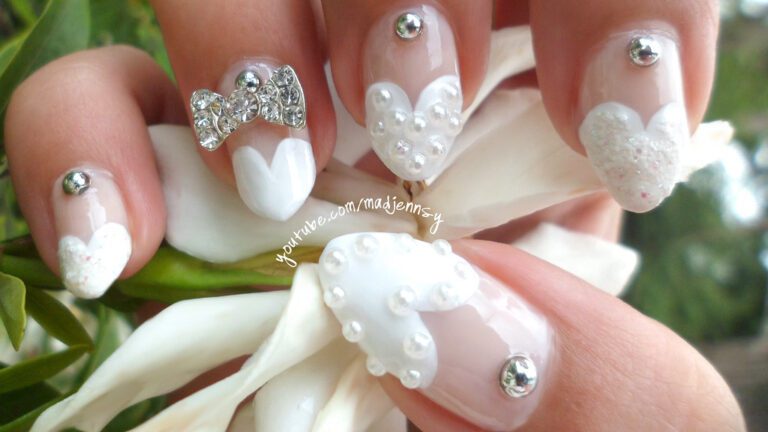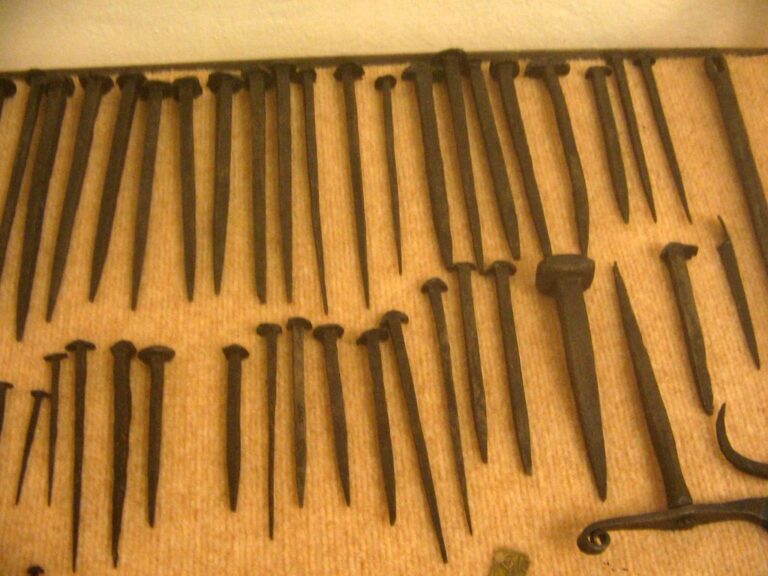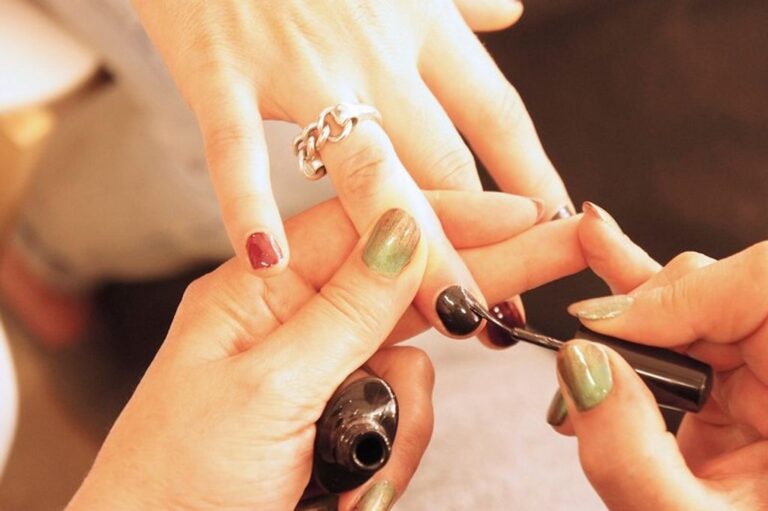“Sink or Swim: Can Nails Go Down the Sink?”
Deprecated: mb_convert_encoding(): Handling HTML entities via mbstring is deprecated; use htmlspecialchars, htmlentities, or mb_encode_numericentity/mb_decode_numericentity instead in /home/u654140373/domains/nailinspire.com/public_html/wp-content/plugins/kadence-pro/dist/elements/elements-init.php on line 1267
Deprecated: Function utf8_decode() is deprecated in /home/u654140373/domains/nailinspire.com/public_html/wp-content/plugins/kadence-pro/dist/elements/elements-init.php on line 1275
In the realm of household maintenance, the question of whether nails can be safely disposed of down the sink is a matter of concern. This article delves into the science behind nails and sinks, explores the potential risks and consequences of improper disposal, and provides best practices for safe and eco-friendly nail disposal methods.
Key Takeaways
- Understanding the composition of nails is essential to understanding their behavior in sinks.
- Sinks operate on the principle of drainage and may not be suitable for nail disposal.
- Improper disposal of nails down the sink can lead to damage in plumbing systems.
- The environmental impact of nail disposal down the sink can be detrimental to ecosystems.
- Safe and eco-friendly nail disposal methods include recycling, using designated disposal containers, and seeking professional disposal services.
The Science of Nails and Sinks

Understanding Nail Composition
Nails, both fingernails and toenails, are more than just protective coverings for the tips of our fingers and toes. They are complex structures composed of several parts, each with a specific function. The primary component of nails is a hard, protective protein called keratin. This is the same substance found in human hair and the outer layer of skin.
The growth of nails is a continuous process that begins from the nail root, located under the cuticle. As new cells are produced, they push the older ones forward, causing the nail to lengthen. This growth is influenced by various factors, including nutrition, health, and age.
Understanding the composition and growth of nails is crucial when considering their disposal. Improper disposal, such as flushing them down the sink, can lead to unexpected consequences due to their durability and the way they interact with plumbing systems.
Tip: Regularly trimming your nails and being mindful of their disposal can prevent plumbing issues and contribute to environmental conservation.
How Sinks Work
The operation of a sink is a marvel of modern plumbing. At the heart of a sink’s functionality is the drain. When water is poured down the sink, it travels through the drain and into the plumbing system. This system is designed to handle liquids and small particles that are easily broken down. However, it is not built to cope with solid items, such as nails, which can cause blockages and other issues.
A critical component of the sink’s plumbing is the trap, a curved section of pipe that holds a small amount of water at all times. This water acts as a seal to prevent sewer gases from entering the home. According to a snippet from Wikipedia, "Essentially all plumbing fixtures including sinks, bathtubs, and showers must be equipped with either an internal or external trap." This simple yet ingenious device is crucial for both functionality and health safety.
Tip: Always be cautious of what goes down your sink. Even if an item seems small enough to pass through the drain, it may not be suitable for your plumbing system.
Understanding the basic principles of how a sink operates can help homeowners make informed decisions about what they dispose of in their sinks. Here’s a quick list of what should and shouldn’t go down your sink:
- Safe to dispose: Liquids, soft food particles, non-greasy substances
- Avoid disposing: Oils, grease, large food items, and solid objects like nails
Potential Risks and Consequences

Damage to Plumbing Systems
When nails are disposed of improperly, they can pose a significant risk to plumbing systems. Nails can cause blockages in pipes and drains, leading to clogs and potential damage to the entire plumbing network. It’s important to be mindful of how nails are disposed of to prevent these issues from occurring. Implementing safe disposal methods and considering eco-friendly alternatives can help mitigate the risks associated with nail disposal.
Environmental Impact
Understanding the environmental impact of nails in sinks is crucial for addressing the potential risks and consequences. When nails are disposed of in sinks, they can contribute to clogging and corrosion of plumbing systems, leading to costly repairs and maintenance. Additionally, the presence of nails in water systems can pose a threat to aquatic life and ecosystems, disrupting the natural balance and biodiversity. It’s important to consider the long-term effects of nail disposal in sinks and take proactive measures to mitigate these environmental risks.
To illustrate the severity of this issue, consider the following data:
| Metric | Value |
|---|---|
| Nails in landfills | 2.5M |
| Plumbing repairs | $500M |
These figures highlight the significant impact of nails on both the environment and infrastructure. It’s clear that proper nail disposal practices are essential for minimizing these risks.
In addressing this environmental concern, it’s crucial to emphasize the importance of safe disposal methods and eco-friendly alternatives. Implementing responsible nail disposal practices can significantly reduce the environmental impact and contribute to sustainable waste management. As a result, individuals and communities can play a vital role in preserving the environment and protecting natural resources.
Tip: When disposing of nails, consider using eco-friendly alternatives and following safe disposal methods to minimize environmental harm.
Best Practices for Nail Disposal

Safe Disposal Methods
When it comes to disposing of nails and related products, it’s crucial to consider the environment and your plumbing system. For metallic nails, a magnetic tool can be used to collect and then recycle them. Non-metallic nails, such as those made from acrylic, should be thrown away in the trash, not down the sink.
- Nail polish*, due to its toxic nature, requires special attention. The best practice is to take it to a local household hazardous waste facility. Similarly, acetone should be handled with care, used over a flat surface to prevent spills, and disposed of according to local regulations.
Tip: Always check with your local waste management services for specific disposal guidelines, as these can vary by location.
Here is a simple list of steps to ensure safe disposal:
- Collect all nail waste using appropriate tools.
- Separate metallic from non-metallic nail waste.
- Dispose of nail polish and chemicals like acetone at designated facilities.
- Follow local guidelines for disposal of non-recyclable nail waste.
Eco-Friendly Alternatives
In the quest for sustainability, the nail care industry is also making strides by offering eco-friendly alternatives for nail disposal and maintenance. One significant shift is the move away from traditional solvents like acetone, which is commonly used for nail polish removal. Instead, products like BKIND and Kure Bazaar offer natural, non-acetone nail polish removers that are gentler on the nails and the environment.
Tip: When choosing nail care products, look for non-toxic options that promote both personal health and environmental well-being.
Additionally, embracing the latest nail trends, such as minimalist chic and natural neutrals, can reduce the need for frequent polish changes, thereby minimizing waste. Here’s a list of eco-friendly nail care practices:
- Opt for nail polishes that are free from harsh chemicals.
- Use biodegradable nail files and buffers.
- Support brands that use recyclable packaging.
- Consider using water-based nail polishes for easier removal.
By adopting these practices, not only do we protect our plumbing systems from potential damage, but we also contribute to a healthier ecosystem.
When it comes to nail disposal, it’s important to follow best practices to ensure safety and environmental responsibility. Proper nail disposal not only protects the environment but also prevents potential health hazards. At NAILinspire.com, we are committed to promoting responsible nail care and providing valuable resources for nail enthusiasts. Visit our website to explore the ultimate online nail art design library and discover the latest trends, tips, and techniques. Join us in embracing the best practices for nail disposal and be part of the NAILinspire community.
Frequently Asked Questions
Can nails go down the sink without causing damage?
Nails should not be disposed of down the sink as they can cause damage to the plumbing system.
What are the potential risks of nails going down the sink?
The potential risks include clogging the pipes, damaging the garbage disposal, and causing environmental pollution.
Are there eco-friendly alternatives for nail disposal?
Yes, there are eco-friendly alternatives such as recycling metal nails or using biodegradable nail disposal bags.
How should nails be safely disposed of?
Nails should be safely disposed of in designated metal recycling bins or taken to a hazardous waste disposal facility.
Can nails be composted?
Metal nails cannot be composted, but biodegradable nails made from natural materials can be composted.
What is the best way to prevent nails from going down the sink?
The best way to prevent nails from going down the sink is to use a magnet to collect and dispose of them properly.







